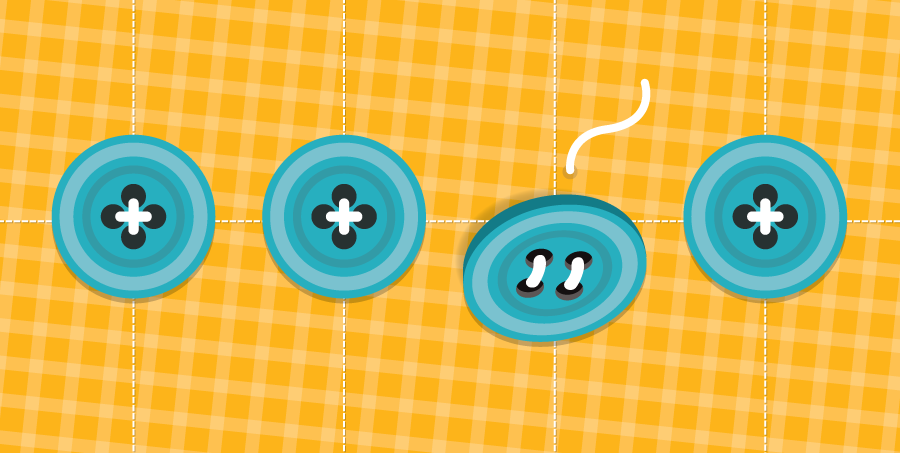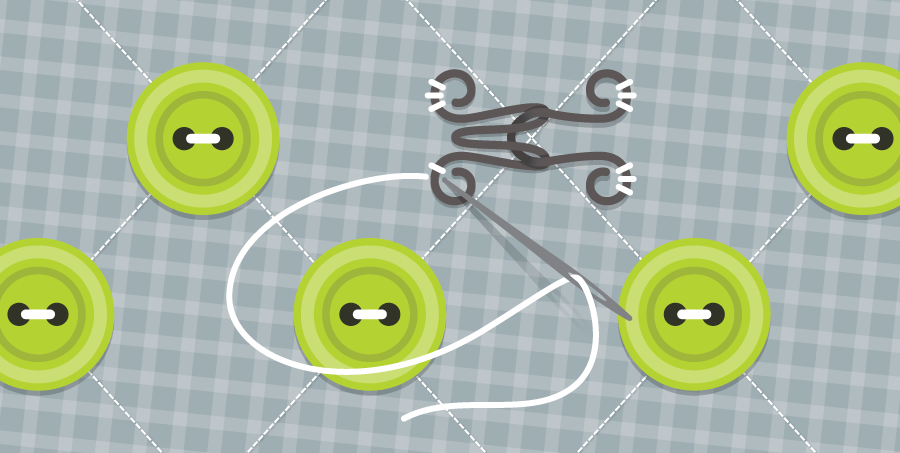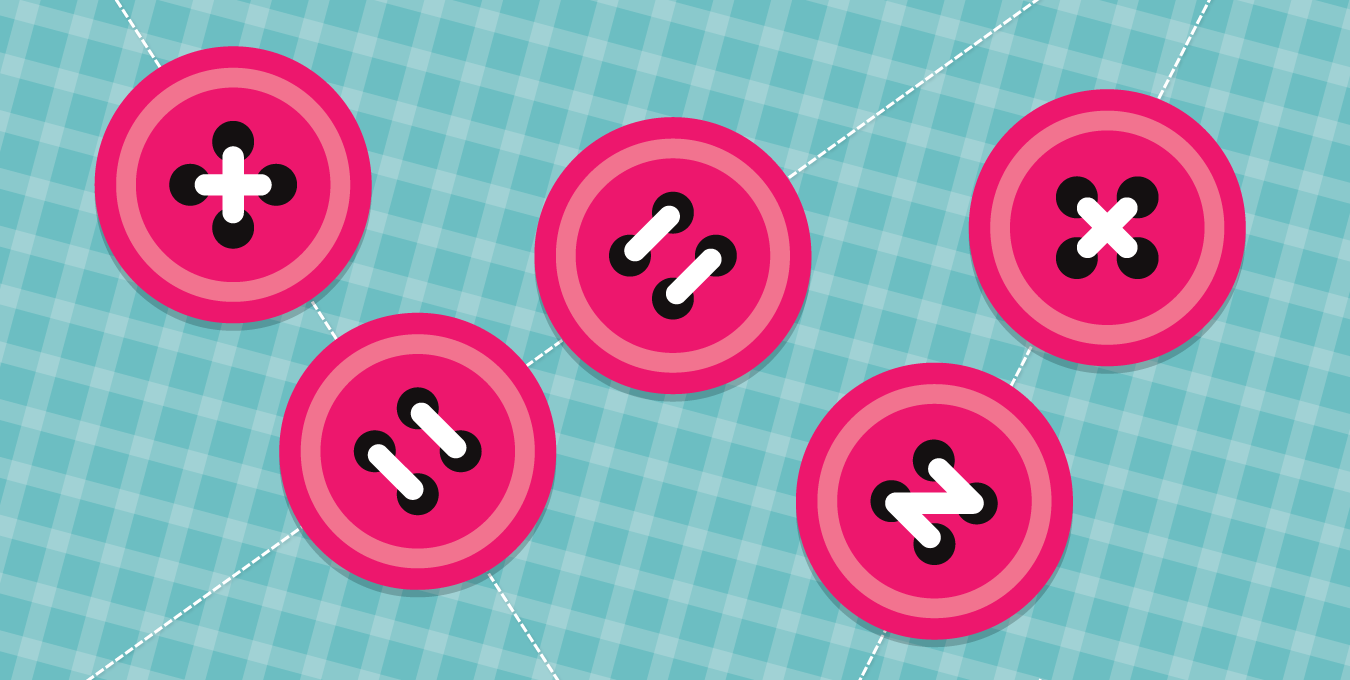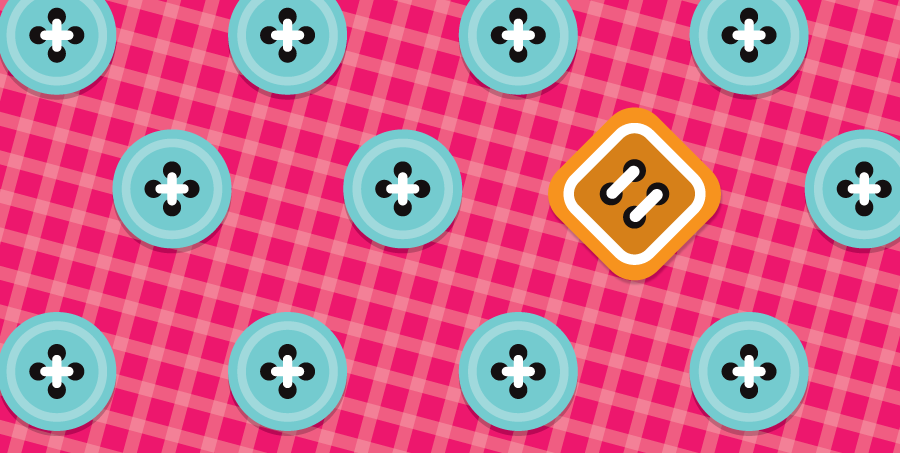In our industry of constantly pushing code and ever-changing websites and applications, "redesign" is a relatively common notion. There's always a way to improve the design somehow. So as we consider design and redesign opportunities, it's sometimes hard to resist the lure of a clean slate. And many designers don't. They fall into the vanity of putting their mark on the design.
That's where we often jump in for our Studios projects — and frankly, where we had found ourselves a couple years back. We start every project with an honest audit of the existing work. As we don our objective glasses, we look at the grand scheme of the user experience and the small details that make it up. It's a safe bet that we'll come across work clearly done by different hands while completing the product audit. Buttons are somehow the epitome of this problem. It's so common that "button consistency" has almost become a design joke.
Why is Button Consistency That Important?
The button in itself is means to an action. Its precise specs may not be that important to the success of the product, which presents designers with literally unlimited design possibilities. That's something designers, unfortunately, embrace.
Button consistency, or more accurately the lack of it, is really a symptom of a bigger organizational problem. It's usually an outcome of designers working on isolated projects, making isolated design decisions without truly considering how their choices affect the whole user experience, and most importantly not being held accountable for these siloed choices. It exposes overall lack of design leadership, influence and communication, which drive a team toward a common goal — great, reliable, and branded products.
Isolated design decisions create a fragmented experience for the customer. Trying something new may be a fun experiment for the designer — and it very well might be a very nice design choice in the situation. But, little by little, these small inconsistencies chip away at the customers' experience with your product or brand. If customers can't trust to find consistency in something as small as a button across your product, how can they trust its underlying technology or service?

As our Chief Instigator recently discussed, the button in itself holds little value — it's an artifact that can be easily changed. The real value is in the thinking that goes into a design decision and how an organization is able to uphold that decision.
Does It Actually Need a Redesign?
Consistency and interface patterns give users certainty and allow them to focus on task completion instead of hunting for the call-to-action. Imagine the sales dip Amazon could be risking by moving their "Add to Cart" button from its usual position on the right. This button's utility combined with customers' familiarity trump it's appearance. Sure, it's not the most innovative-looking button on the web, but redesigning it could really hurt the business.

Yet, designers are quick to jump on redesign opportunities — after all, it's exciting to start anew. In reality, however, a redesign isn't always the right solution to the problem. The roadblock for users may lie in the pricing of your product, which could be discovered through customer development. Or your messaging isn't compelling and could be saved by some clever copywriting. Or maybe customers feel compelled to convert, but the checkout process is too long and needs to be streamlined. Any number of changes could generate dramatic value for the business, and though they likely involve some design decisions, they rarely require a clean slate.
Brand new product designs take a long time to develop. It's a costly proposition, one that has to eventually recover its investment. So instead of jumping on the redesign train, we must first consider the smallest efforts that could produce the biggest payoff. For example, if conversion is suffering, consider the dozen small tweaks before getting into sweeping changes:
- Maybe it's just not prominent enough. What if you make the button bigger?
- Maybe contrast is the problem. We know that contrast in a call-to-action is more important than its color, so changing the button's color could do the trick.
- Maybe you're trying to be too clever in the button language, sacrificing clarity. Sometimes having a clear, simple message is more beneficial than showing personality.
- Maybe your layout is too cluttered and the button gets lost. Removing extraneous content or adding an arrow pointing to the CTA could be the answer!
There's an endless matrix of decisions that go into a successful design. And when trying to gain design influence within an organization, each decision has to be sober and measured. Starting fresh and making many changes in one sweep doesn't highlight what the problem actually was in retrospect. So the next time someone on the team questions these previous decisions and wants to take their own crack at it, there's not a single definitive point to stop them.
So the button inconsistency lives on.
What If the Redesign is Warranted?
We're not anti-redesign. We advocate for understanding if the redesign is the right approach. And sometimes it is. But we can't just jump into a redesign project without fully understanding where it's been, how it became what it is, and how our changes may affect other teams or facets of the business.

A great place to start — in almost anything that we do, actually — is asking a lot of questions. Having a solid grasp on how the previous decision was made gives you power and ammunition to fight for the design you'll propose in the future. Even small design decisions can leave a long trail of hurt feelings, resentment and resistance. It can be quite simply prevented by getting team's input and openly discussing solutions, creating a sense of collaboration and goodwill along the way.
When it's time to pull the trigger, having a plan helps. What or whom does the change affect? Who needs to know about it? How will you rally the troops to get it done?
Once the decision is made, tell the world! Being your team, of course. Announce your decision to the group, talk to people individually (again), write an email about the decision and how it gets rolled out, document it in a style guide. Make it known and explain how it creates value for the organization. Finally, every decision has an owner, or it should. Without an owner, someone to fight for it and protect it, there's nothing stopping another team member from unraveling it.
Our recent redesign on the ZURB Library — a redesign in its truest sense — had us surveying seven independent properties for interface and workflow patterns. Over several years, we've curated a great amount of content that holds a ton of value for practicing and aspiring product designers, but maintaining them had become a giant pain. Each one was developed at a different time by a different team, long before we had a vision for a unified Library. So they all had a unique look, feel and, worst of all, a separate admin tool for us to manage.
It took us many-a-spreadsheet and many months to design and develop an interface that lets us maintain and support unique content for these properties in a unified way. During this process, we also took stock of our own button consistency problem and made the decision to commit to one button style "to rule them all." We've since been rolling it out across all ZURB products. Now, it's every designer's responsibility to uphold and respect the guideline.
So, Is That New Button Really Worth It?
There is no perfect button. Let's start there. So what's a new one worth to you? How many conversations and how much time would it take to replicate that given design choice across the entire product? Does it create tangible value for the business when all said and done?

Sometimes working within fixed design constraints is a blessing. If the button decision was already made for you — great, run with it. Always assume that decisions made before you had a reason behind them, and challenging them may not be worth the effort. Solving new design problems is way more fulfilling than tweaking existing designs. At the end of the day, it's more rewarding to change the course of a product than to change a button.
